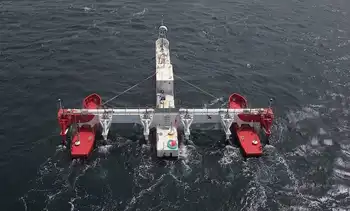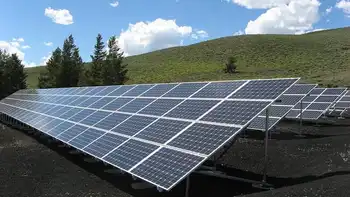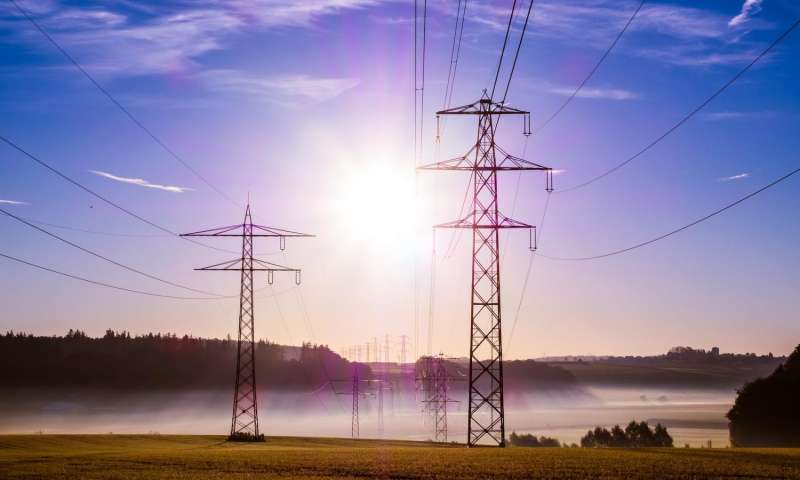Is a solar trade war about to flare?
By Reuters
Protective Relay Training - Basic
Our customized live online or in‑person group training can be delivered to your staff at your location.

- Live Online
- 12 hours Instructor-led
- Group Training Available
Kobbe, 64, works at Finow airport, where a local investment firm built the 58 million euro US $77 million solar park in 2009. Finow itself was built by the Nazis before World War Two and later became one of the Soviet Union's main Cold War hubs. Now the small aircraft that still use the airport share it with about 90,000 solar modules — which together generate enough to power 6,400 households a year.
"This is where they the Soviets used to store their nuclear weapons," says Kobbe, who runs a small museum documenting the airport's history, guiding his van over the snow-covered landing strip.
Now there's a different foreign presence in Finow. When the first solar modules arrived for installation they came not from a local manufacturer — German solar company Conergy runs a factory just 45 minutes away in Frankfurt an der Oder, for instance — but from China's Suntech Power Holdings, now the world's largest maker of photovoltaic PV solar modules. "We were quite surprised when the trucks brought Chinese modules, and not German ones," Kobbe says. "But they were probably cheaper." Solarhybrid, which spearheaded construction of the park, says reductions in Germany's renewable subsidies meant it had to use Suntech modules to stay competitive.
Germany has long been the global solar industry's engine. Europe's biggest economy consumed more than half the solar panels produced around the world in 2010. Solar accounts for just two percent of Germany's power production, but the country added a record 8,000 megawatts MW of solar modules last year — equal to the capacity of eight nuclear reactors — far outpacing Italy, Japan and the United States.
So why are China's solar companies benefiting at the expense of renewable energy manufacturers in Europe and the United States? Virtually non-existent a decade ago, Chinese solar companies now control two thirds of solar cell production in the $39 billion global PV market. Critics say this is mostly because the generous subsidies they receive at home give them an advantage over other countries' manufacturers and restrictions keep foreign companies from competing for China's domestic projects. European and U.S. subsidies are designed to boost solar usage no matter who builds the hardware. Chinese subsidies, western firms complain, help Chinese solar manufacturers alone.
Resentment in western capitals is building. Beijing is currently considering plans to spend up to $1.5 trillion over five years to back strategic industries, including alternative energy, a source with ties to the leadership and direct knowledge of the proposal told Reuters in December.
The Obama administration, prompted by a complaint by the United Steelworkers union in September, is now considering taking a case against China to the World Trade Organization WTO regarding Beijing's support of its solar companies. Last month, the U.S. government complained to the WTO that China illegally helped its wind power manufacturers. The issue of trade will be under discussion when Chinese President Hu Jintao visits Washington. Could a green trade war be brewing?
"I think we're always afraid of a trade war so we don't act. The Chinese are never afraid of a trade war so they do act. And that's why they're beating us in too many cases on clean energy and other industrial concerns," said U.S. Senator Sherrod Brown, a Democrat whose home state of Ohio is a hub of solar panel production for companies such as First Solar Inc, which still ranks as the world's top solar maker by market value and is one of the largest producers.
"For 10 years we've always stepped back because we're afraid, we don't want to upset anybody. Every other country practices trade according to its national interest. We practice trade according to an economic text book that is 10 years out of print."
So far, Berlin's response has been more restrained, relying on European Union discussions with China to overcome the trade disputes. But "if such talks remain unsuccessful, the launch of a WTO dispute settlement can be considered," Jochen Homann, deputy German Economy Minister, said in a statement to a member of the German parliament who then passed it on to Reuters.
Every solar company in the world relies on some form of subsidy to build or sell its products. That's because solar electricity is still about eight times more expensive than power generated by coal-fired plants. The global solar industry only really began to take off when, about a decade ago, governments introduced subsidies for clean energy systems in an effort to trim their carbon dioxide output and reduce dependence on fossil fuels.
Germany's supports are generous — an estimated 7.3 billion euros this year — and have been so successful that Berlin started reducing payments for new solar plants last year, bringing forward by more than a year a decrease it already planned. The support comes indirectly, through so-called feed-in tariffs. Berlin doesn't pay solar panel makers directly, but forces larger utilities to pay the generators of solar power, including homeowners, more for each watt that comes from the sun. In the end, the cost for solar power — currently about 28.74 euro cents per kilowatt hour KWh, which is down about 27 percent since the beginning of 2010 — is borne by all consumers. Because the subsidy goes to the person or company generating power, the issue of where the equipment is made is ignored.
The United States, too, subsidizes its solar industry. Last month Washington extended for a year a popular cash grant program that pays 30 percent of the development costs to build power plants that use solar modules. Crucially, that help is available to anyone building a solar power plant, irrespective of where the panels come from. U.S. companies also earn manufacturing tax credits for production facilities, and states and cities often waive taxes to lure manufacturers to set up operations.
The big difference with China, its solar critics say, is that Beijing helps only its own manufacturers — who then send their panels around the globe to reap additional subsidies in other countries. Western companies also complain that foreign solar firms are locked out of bidding for projects inside China.
"While foreign manufacturers find the German market open, the Chinese domestic market has so far been walled off. Therefore, we're watching the WTO initiatives in the U.S. very carefully," says Carsten Koernig, managing director of BSW, the German solar industry association.
The USW complaint blames China's aid to its solar industry for a creating a supply glut which drove down panel prices by 40 percent in 2009 and pushed U.S. competitors out of the market. China's solar shipments to Europe grew eightfold from 2006 to 2009, the USW complaint says, faster than the rise in overall European demand.
The USW also accuses Beijing of direct violations of China's agreement with the WTO. According to the steelworkers' complaint, Sinosure, China's official export credit insurance agency, provided $1.25 billion in insurance for photovoltaic exports from China, covering nearly half of all Chinese exports of the product. The USW claims Sinosure ran a cumulative loss of 1.4 billion yuan US $212 million between 2002 and 2008. Those losses, a USW lawyer claims, indicate the subsidy was a violation of trade rules. Chinese companies reject the idea they are helped more than their western rivals.
Western companies also argue that Beijing's subsidy regime discourages the use of solar panels in China. Unlike Germany, China refuses to introduce tariff incentives that would drive domestic demand for solar energy. Even with its dominant share of solar cell and panel production, and even as the country scrambles to generate more power, analysts estimate China installed less than 500 MW of solar power inside its own borders in 2010.
With no incentive to sell at home, it's no wonder that Chinese companies prefer to export their hardware. Some of China's leading exporters shunned a Chinese government tender for solar projects in the third quarter, saying they could not earn a profit.
"The Chinese government does not want to be purchasing or installing PV at the current prices. It wants to use the Western market to create volume to drive down the cost and, when the cost is lower, then China will start buying," says Michael Eckhart, president of the trade group American Council on Renewable Energy.
The result, western companies complain, is that they suffer while the Chinese prosper. Just up the road from Finow airport's solar park, Conergy, once Europe's largest solar player, was rescued from insolvency by hedge funds in late December, as it struggled to service a mounting debt pile. In the United States, many small solar companies have gone bust earlier this month, publicly listed Evergreen Solar Inc said it would shut its plant in Massachusetts and concentrate on manufacturing in Wuhan, China — where it is the minority partner in a factory sponsored by the provincial Hubei government.
China's Suntech, on the other hand, is booming. Founded in Wuxi in the southeast of Jiangsu province in 2001, Suntech is now the largest solar company by output in the world. After starting with just $6 million in state money in 2001 it now turns over $1.5 billion a year. In 2002 it produced 10 MW of solar panels. It expects to ship 2,200 MW this year.
It's had some help. Where Germany's Conergy struggled to get credit last year, Suntech signed an agreement with China Development Bank in April that gives it access to up to 50 billion yuan US $7.3 billion to help finance its expansion.
Beijing does not disclose the total amount it has put behind its solar sector, but Chinese solar executives say credit lines to domestic solar firms from state-owned China Development Bank alone totaled over $30 billion in 2010. Suntech and Jiangxi-based LDK Solar Co, which is five years old, have been the biggest beneficiaries, accounting for over half those credits, which run up to six years. The lines of credit are on top of cash grants, tax benefits and low-interest loans Beijing has put behind the industry — funds that backstop the young companies' balance sheets and are the envy of their Western competitors.
Suntech has also benefited from provincial government support. Like most companies building a business within China's specified high-tech zone, Suntech was exempt from the usual rate of 33 percent corporate tax for its first two profitable years, and subsequently paid 7.5 percent, rising to 15 percent in 2008. As it has grown, the company has also been given value added tax VAT rebates on goods sold overseas and exempted from paying VAT on the raw materials it imports. Renewable energy companies like Suntech can also secure loans at a discount of around 50 basis points on the headline rate, currently 5.81 percent.
All that support helped Suntech win the contract for the hardware installed at Finow, a fact that "is certainly pretty frustrating for German manufacturers," says Marc Lohoff, head of Asian business at Conergy.
China's solar manufacturers deny they have an edge over their foreign rivals, arguing that companies the world over receive help from national governments.
"The Chinese government really does not do much for solar energy not as much support like you see in Germany and the U.S.," LDK chairman and chief executive Peng Xiaofeng, one of the world's youngest billionaires, told Reuters in an interview. "Every country, every government subsidizes its solar sector. China is not alone in giving subsidies," agrees Terry Wang, chief financial officer of Jiangsu-based Trina Solar, China's third-largest solar module company.
Wang believes the WTO will reject any complaint about solar subsidies. "I don't believe a U.S. trade complaint before the WTO will have a solid case against Chinese module makers," he said.
On the charge that foreign solar manufacturers are shut out of China, Beijing can point to U.S. firm First Solar, which has won tentative approval to install its panels for a power-producing plant in China. First Solar produces thin-film solar panels at the lowest cost in the world. In 2009, it became the first — and so far only — foreign company to win a contract in China, signing a memorandum of understanding to develop the world's largest photovoltaic power plant, a 2,000 MW solar project in the city of Ordos, Inner Mongolia.
Earlier this month, First Solar sealed a partnership with China Guangdong Nuclear Solar Energy Development Co. that would see the Chinese company take a majority stake in the pilot project, though no start date for construction has been announced. Plans for a 30 MW pilot project at Ordos have been delayed. And First Solar's hopes of cracking the Chinese market pale in comparison to the advances its competitors are making on its home turf. In August, Suntech opened its first U.S. manufacturing plant in Goodyear, Arizona, just up the road from First Solar's headquarters in Tempe.
"First Solar is a leader in the industry. We want to make sure our first step in there is at a set of economics that make this project viable, and define viable economics in the future," says First Solar board member TK Kallenbach, who heads up the company's business development in China.
With costs for solar modules falling fast, some industry experts have speculated that China could simply drag out any WTO process until its companies are strong enough to stand on their own.
It's a risky game — for all concerned. If the United States lodges a complaint and proves that China wrongly boosted its companies, Washington could "retaliate to the extent of the damage that we allege they have caused," says Carla Hills, a former U.S. Trade Representative who battled with Japan, Brazil and India over trade and led negotiations that led to the NAFTA trade treaty. But a formal complaint could trigger a trade war that the Chinese government has said would hit an industry crucial to tackling climate change. "If the U.S. closes the door for trading with the rest of the world, including China, in renewable energy products, the U.S. may significantly delay the already long struggle for developing alternative energy sources, if not entirely destroy this opportunity for humankind," China said in a written response to the USW complaint.
That sort of rhetoric does not sit well in Finow, where German workers saw few benefits from the huge solar plant. "Economically, this plant had no impact on our region," one of the owners of Finow airport said on condition of anonymity, because of the sensitivity of the topic. "No jobs were created as the installation work was mainly done by eastern Europeans." The park is set for expansion this year. But, says Kobbe, "I doubt that they'll use German modules this time."











